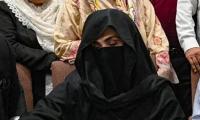The deed is done, or will be shortly after the IMF board has approved the staff-level agreement with the government of Pakistan for a structural adjustment programme.
The programme identifies the objectives of budgetary and balance of payment support. The government of Pakistan did not have sufficient dollars to meet its needs and had to go to the IMF to borrow some. Reportedly, it might need an additional twelve billion dollars in the next financial year to pay off its liabilities.
The benefit of entering an IMF programme will also bring some handy monetary support from the World Bank and the Asian Development Bank to easing the pressure on Pakistan’s desperate need for foreign exchange. In the next seven years, Pakistan will need to pay out around $37 billion in payment of external dues from accumulated loans by previous governments. Pakistan has an external debt pile of around $100 billion, which is likely to increase, unless we either begin to spend less for our current account needs or produce more to earn more dollars and remain above the liability curve. Either end needs structural changes and committed application of an economic plan. The IMF imposes one.
How did we end up here? We weren’t creating sufficient dollars through exports nor receiving them from foreign investments. Nor were we frugal with our living habits. Similarly, we didn’t create any local replacements to our routine imports and kept spending precious dollars to buy them externally. CPEC brought some but those were strictly project-based, not to be kept in the central bank to buoy its reserves. We earned less than we spent and ended up in this crunch.
How did the previous governments camouflage this brewing calamity? They kept on a borrowing binge till the hard-stop arrived. Even worse, they didn’t use the money creatively. One way for the PTI would have been to keep pledging the family silver to add to the debt pile but then an economy has only so much capacity to pay back, and lenders are sensitive to the security of their money.
So, unless we changed our ways, Pakistan was already bankrupt. Soon people would stop trading with us and bring our life to a standstill; we need oil, gas, edibles (sadly) and some life-sustaining essentials from abroad. We would be a basket-case country like Sudan or Somalia or Yemen and Libya. And, no, being a nuclear-capable nation doesn’t count unless we were to lay out a garage-sale of those.
Under the PML-N, the last breathing space was squeezed out of this economy. As we added debt, we frittered resource. Our foreign exchange reserves never grew at the rate that we were borrowing. We returned some loans and built some infrastructure. But we also pumped precious dollars into the money market to retain a valuation of the rupee which did not correspond to its true worth. That helped retain a chimera – but the bubble finally burst.
The government also used the money to heavily subsidize the cost of electricity and gas to consumers and to major industrial players who were mostly politically-connected or cronies. So even as important segments of society and the people were kept in good humour, it all came at a cost to the national exchequer. We essentially ate up every penny in our kitty even as we ransomed our future generations against heavily borrowed capacities. Under the PTI, it is time to pay back our dues.
This is where the IMF comes in handy, but at a cost. The dignity of sovereignty is the first to go. The IMF will now prescribe the life that you must live; the days of binge spending are over, replaced with the austere. Those who lend first ensure the security of their own money and keep you on a leash so that you return to them their dues on time. Sometimes, they may also manipulate you into conforming to a political purpose supporting major benefactors in the IFIs. The IMF decides what is right for you and what you must prefer in the prescription. It is usually sedate and deliberate, suppressing growth and constricting expansion, at best retaining subsistence. That has a social and political cost. What faces economy leaders is thus stark: how to grow in IMF-governed economies.
Economic gurus have a busy to-do list when looking at bridge financing through the IMF and buying precious time to correct the distortions and anomalies that have come to stare them in the face. This if indeed a government has the will and the political courage to take on elite-interests – which in the first place are the reason such distortions have found their way into fundamental policy conflicts. But a few obvious ones to spur growth may just lose notice when an economy is so subsumed by the strict application of an externally driven prescription.
Pakistan’s internal effort should not hinge only around stabilizing and correcting the distortions but also in devising a strategy to grow, even if so infinitesimally, enabling hope and promise. To begin with, an economy that has so significantly shrunk in the last year or so – from around $320 billion to only $276 billion – will need to be restored to its original size with some sound economic underpinning.
Two such sectors from the formal economy hold out promise of longer-term growth, sufficiency and employment even as the IMF enforces a sullen disposition. These are agriculture and small-medium enterprises (SMEs), very much within the skill-set of existing capabilities. More productive agriculture can engender value-added industry with focused governmental direction and support impacting and improving the stock of some sixty percent labour engaged in this activity. We can ensure food sufficiency and with sufficient enterprise enable deletion of what routinely gets imported at an exorbitant cost. The next three years should also see an increased focus on water resource management and preservation as we introduce our farmers to its more efficient use. Its appendage to agriculture is critical – and by doing so we only enhance productivity in the agriculture sector.
The SMEs engaged by a similar governmental focus with supporting financial arrangements can help deletion of basic technological needs of our still conservative industry and be a useful vehicle for employment of local labour needing minimal skills. This can benefit our rapidly growing job-market while contributing to growth. The LSM will be slow to pick up and regain its eminence because of its lumbering size and inertia; the SMEs thus could fill-in.
CPEC must retain its centrality as the third area of focus to enable growth and development. The SEZs must be developed and equipped with the necessary wherewithal to bring fruition to the real promise of CPEC. IT, if properly directed and supported, can take some slack out of a depressed economy while earning useful foreign exchange. It is also not an investment heavy undertaking.
If under an imposed economic regime we can do all that the IMF wants of us while targeting growth through reform and development in chosen areas, we may just have the making of some buoyancy as our independence and sovereignty is returned to us in three years time. Macro stability must be accompanied by a sustainable growth strategy.
Email: shhzdchdhry@yahoo.com
Partnership between Pakistan and China in media and culture reflects shared commitment to strengthening bilateral...
This article focuses on single error committed by our respected judiciary which haunts me more than I would care to...
US still leads world in military spending and ability to project military power across globe
On July 3, UNGA adopted another resolution advocating for “free, open, inclusive” environment for AI development
Data, today, defines how we make decisions with tools allowing us to analyse experience more precisely
But if history has shown us anything, it is that rivals can eventually unite when stakes are high enough







